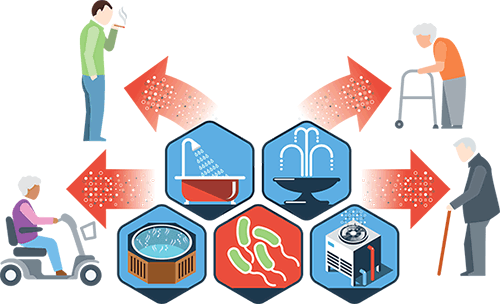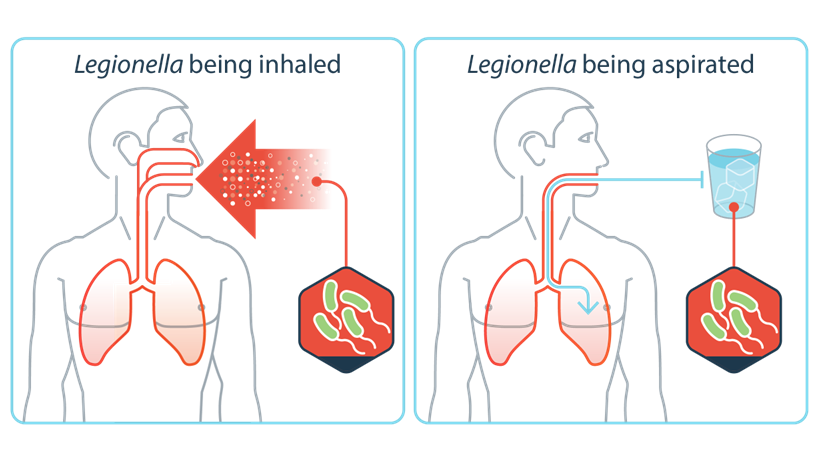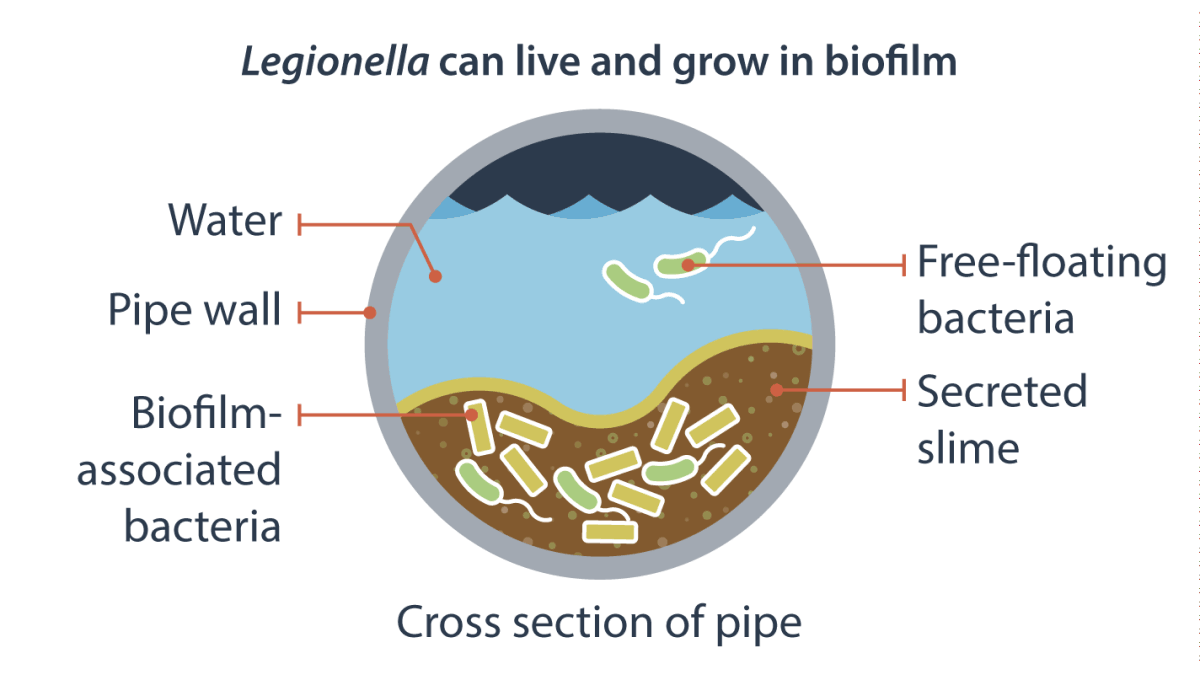
Key points
- Legionella bacteria cause Legionnaires’ disease and Pontiac fever.
- Water systems and devices can spread Legionella to people.
- The most common way for someone to get sick is by breathing in mist containing Legionella.
Causes and sources of infection
Cause
A type of bacteria called Legionella causes Legionnaires’ disease and Pontiac fever.
Sources of infection
Water systems and devices
The bacteria can become a health concern when they grow and spread in human-made building water systems like:
- Showerheads and sink faucets
- Hot tubs
- Decorative fountains and water features
- Hot water tanks and heaters
- Large, complex plumbing systems
- Cooling towers
Cooling towers are structures that contain water and a fan as part of centralized air-cooling systems for buildings or industrial processes.

Vehicle windshield wiper fluid
Legionella can also grow in the windshield wiper fluid tank of a vehicle. The bacteria are more likely to grow if the tank is filled with water and not genuine windshield cleaner fluid.
Devices that aren’t a source of infection
Home and car air-conditioning units don’t use water to cool the air, so they aren’t a risk for Legionella growth. This includes window units, such as the kind seen at some hotels.
How it spreads
Once Legionella grows and multiplies in a building water system, it can spread to people in a few ways.
Breathing in mist
Water containing Legionella can spread in droplets small enough for people to breathe in. People can get Legionnaires’ disease or Pontiac fever when they breathe in (inhale) those small droplets containing the bacteria. This is the most common way people get sick.
Swallowing water into the lungs
Less commonly, people can get sick by aspiration of drinking water containing Legionella. This happens when water accidentally goes into the lungs while drinking. People at increased risk of aspiration include those with swallowing difficulties.

Not spread person to person
In general, people don’t spread Legionnaires’ disease and Pontiac fever to other people. However, this may be possible under rare circumstances.
Risk factors
Most healthy people exposed to Legionella don’t get sick. People at increased risk of getting sick include:
- Current or former smokers
- People 50 years or older
- People with specific health issues or conditions
Health issues and conditions
People with the following health conditions are at increased risk for getting sick if exposed to Legionella:
- Cancer
- Chronic lung disease
- Diabetes
- Kidney failure
- Liver failure
- Weak immune system
Chronic lung disease includes chronic obstructive pulmonary disease (commonly called COPD) and emphysema.
In addition to medical conditions, some medicines weaken the immune system (like chemotherapy or those taken after a transplant operation).
Why it spreads
Gets into building water systems
Legionella bacteria occur naturally in freshwater environments, like lakes and streams. Generally, the low amounts of these bacteria in freshwater don’t lead to disease.
However, Legionella can pose a risk to health when it gets into building water systems and grows (increases in numbers).
Factors that lead to Legionella growth
Many things can make it easier for Legionella to grow in water. A few of those factors include:
- Biofilm (slime that provides a place for germs to grow)
- Certain temperatures
- Not having enough disinfectant
- Slow or no water movement

Preventing Legionella infections often involves maintaining the water system to control for these factors.
Source: CDC









